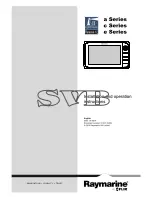
13
other types, e.g., dynamic or ribbon, will not be damaged by the inadvertent application of phantom
power, but note that some older mics may be; if you have any doubt, please check the specification
of your mic to ensure that it is safe to use.
Input 2 uses a ¼” (6.35 mm) jack socket which is 2-pole when in instrument mode and 3-pole when
used as a mono line input. It can accept signals from an electric or electroacoustic guitar or bass,
a keyboard, and most other types of audio equipment. Set the INST switch ON (‘INST’ illuminates
red) if you are connecting a musical instrument, e.g., a guitar in the example, using an ordinary
2-pole (TS) guitar jack. Set the INST switch to OFF if you are connecting a line level source such as a
keyboard, synthesiser or the balanced output of an external audio mixer via a 3-pole (TRS) jack. Note
the jack socket accepts both TRS and TS types of jack plug.
Using Direct Monitoring
You will frequently hear the term “latency” used in connection with digital audio systems. In the case
of the simple DAW recording application described above, latency will be the time it takes for your
input signals to pass through your computer and audio software. Latency can be a problem for a
performer who wishes to record while monitoring their input signals.
The Scarlett Solo is fitted with a “Direct Monitoring” option, which overcomes this problem. Setting
the front panel DIRECT MONITOR switch to ON will route your input signals directly to the Scarlett
Solo’s headphone and main monitor outputs. This enables you to hear yourself with zero latency –
i.e., in “real time” – along with the computer playback. Your inputs will be summed to mono, so both
mic and instrument will appear in the centre of the stereo image. Note that the input signals to your
computer are not affected in any way by the use of Direct Monitor.
When Direct Monitoring is set to ON, ensure that your recording software is not set to route its input
(what you are currently recording) to its output. If it is, you will hear yourself “twice”, with one signal
audibly delayed as an echo.
Monitoring with DIRECT MONITOR set to OFF can be useful when using an FX plug-in to your DAW to
create a stereo effect which contributes to the live performance. In this way, you will be able to hear
exactly what is being recorded, complete with the FX. However, some latency may result, the amount
depending on the DAW’s buffer size and processing power of the computer.
Headphone monitoring
Connect a pair of stereo headphones to the front panel headphone socket to hear both what you are
recording - your current input signal(s), plus any tracks you’ve already recorded in your computer.
Note: Set the front panel DIRECT MONITOR switch to ON when recording. The pre-recorded tracks
will be heard in stereo, and the current input signals in mono – central in the stereo image. If you are
using both the mic and instrument inputs, the two inputs will be summed in mono.
Содержание Scarlett Solo
Страница 1: ...User Guide www focusrite com Version 1 0 ...






































